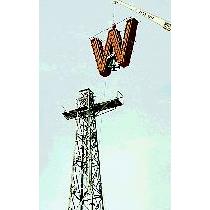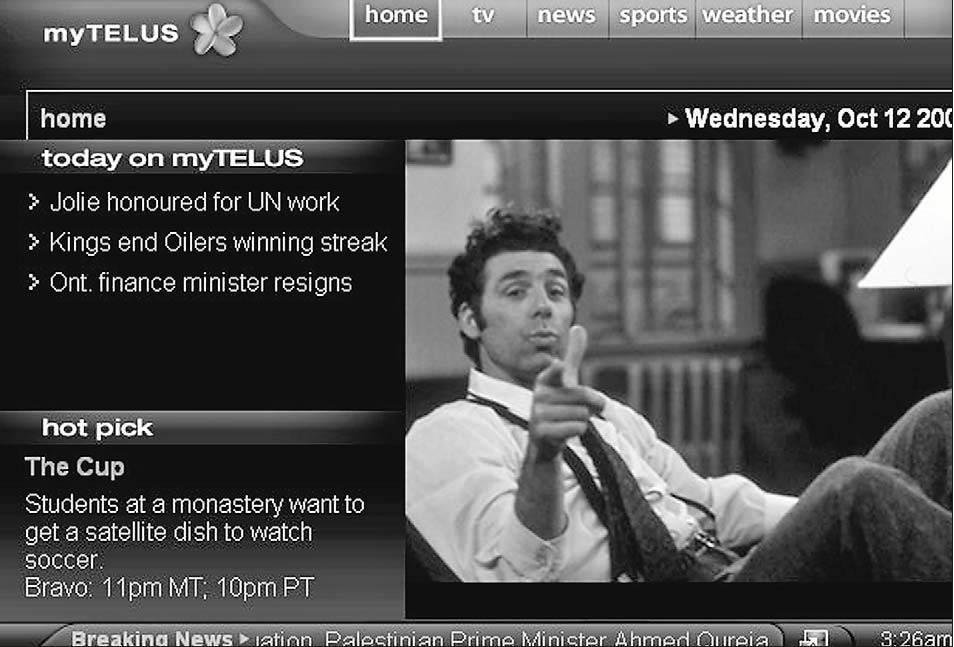Archive for June, 2006
a roundup of various stadiums in cities across Canada
Sunday, June 25th, 2006Judgment day for stadium on stilts
Sunday, June 25th, 2006It’s an ambitious plan for a sparkling new stadium that would transform the bleakness of the rail yard it would straddle. On Tuesday, Vancouver city council will decide whether Greg Kerfoot’s idea has any chance of succeeding
Mike Roberts
Province
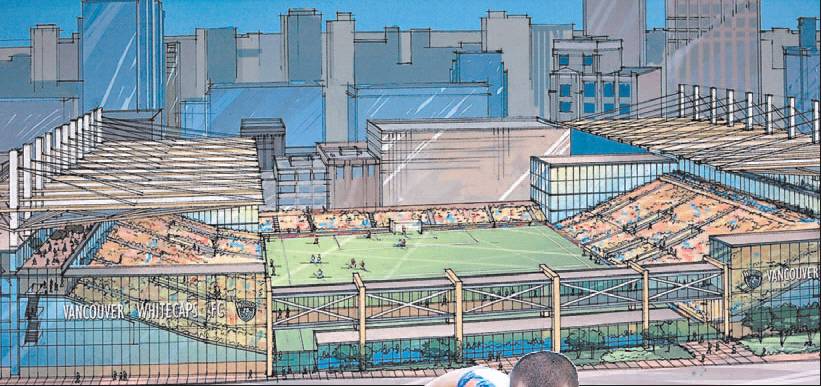
If backers of the Whitecaps’ proposed stadium can clear the many obstacles they face, the thud of ball against boot and the roar of passionate crowds could become part of the downtown experience. Photograph by : Ric Ernst, The Province

Forget Cirque du Soleil and Bard on the Beach. The best theatre in Vancouver will play out Tuesday evening in council chambers when a pitched battle gets under way to decide the fate of the Whitecaps’ Waterfront Stadium.
The privately funded soccer stadium, which could cost as much as $120 million, would be built on stilts over the CPR rail yards east of Canada Place before 2010.
The 15,000-seat stadium would be an open-roofed facility hosting soccer matches, as well as rugby and tennis tournaments, community festivals and concerts.
If built, it would be the most significant and stunning addition to the city’s foreshore in 20 years. But it would also impact area businesses, traffic and the quality of life of Vancouverites living in the 3,000 residential units within a 350-metre radius of the site.
At the special council meeting Tuesday, Vancouver councillors will vote on a resolution on the Whitecaps’ current proposal for the
4.2-hectare arena site. If they vote “Yes” to this resolution, council will be agreeing to adopt an agenda to move forward with a modified proposal for the site, clearing the way for the necessary zoning application.
But if they vote “No,” that will be the end of the proposal for this site, and the Whitecaps will be forced to look elsewhere for a place to plop their stadium.
Now, you may well ask why the City of Vancouver is taking this particular gift horse to the dentist.
Here’s a local guy — software
multimillionaire Greg Kerfoot — who bought and rescued Vancouver’s flagging soccer team in 2003, and subsequently built a $4-million training centre. A guy now prepared to drop millions on a multi-use
stadium on land he himself owns.
Add to this the $165,000 Kerfoot paid the city for an initial review of his broad-strokes plan, and the fact the parcel in question will one day be developed anyway, and the word that comes to mind is, “Duh?”
Kerfoot may have a grand plan and bottomless pockets, says Larry Beasley, the city’s central-area planner, but that doesn’t buy a rubber stamp from city hall, no matter how “commendable” the project.
“We can’t just casually, just because somebody wants to do something, drop all those worries and concerns and issue a permit,” says Beasley. “That just wouldn’t be prudent.
“This city has never been expedient in the important decisions for our city, and that’s why we have a good city.”
Adds Beasley: “The proposal we have in front of us now, we can’t support.”
City staff have outlined five “fundamental issues” that need to be resolved:
n Provision of an adequate street network for access, emergency exiting and crowd marshalling.
n Resolution of the risks and liability associated with dangerous goods on the train tracks.
n Reconfiguration of the stadium structure/site to ensure a better “fit” with heritage Gastown.
n Resolution of impacts on
livability for residents in the area.
n Resolution of impacts on future port lands development.
Beasley says Kerfoot was warned the stadium proposition was “somewhat of a long shot” and that the concerns of citizens would be taken into account, including those of various Gastown groups expected to be out in force on Tuesday.
“If someone just NIMBY-ism comes in and says, ‘I don’t want it in my back yard!’ that’s not very influential,” explains Beasley. “But if someone comes in and says, ‘Look, I’m worried about noise, I’m worried about loss of business, I’m worried about overviewing and loss of my privacy, I’m worried about loss of views, I’m worried about traffic on my streets and having to close my streets 200 days of the year,’ those issues are tangible, real issues, and there’s no city that would prudently say to several thousand landowners and business people and residents, ‘We’re going to ignore you while we let one citizen do something on their land that affects them all.'”
But the Whitecaps argue the plan to date is little more than “basic renderings” and is completely changeable.
Whitecaps director of soccer operations Bob Lenarduzzi is confident the stadium will fly.
“We’re looking for the green light to move forward and that council make the project a priority,” he said at a flag-waving press conference earlier this week.
“I feel like we know what the obstacles are, what the issues are. All the stakeholders feel the issues can be resolved.”
High-profile supporters joined Lenarduzzi in a show of optimism.
“The stadium we’re talking about is something very vital to us,” said Dr. Godwin Eni, president of the Vancouver Multicultural Society.
“Economically, culturally, it’s obvious, there are too many pluses,” said music mogul Dan Fraser, president of Nettwerk Management.
“You go to the U.K., you see 25 of these stadiums in neighbourhoods and they respect the heritage there. They become part of the community.”
For his part, Beasley says if Kerfoot and his team can solve the problems outlined by the city, “they’re going to find us there wanting to help them make it happen.
“We’re not looking for A+ on everything,” he says. “We’re looking for decently good resolutions.”
© The Vancouver Province 2006
Fuel-cell train service gathering steam
Sunday, June 25th, 2006TRANSIT: Railway buffs promoting cheap alternative to B-Line bus
Brian Lewis
Province
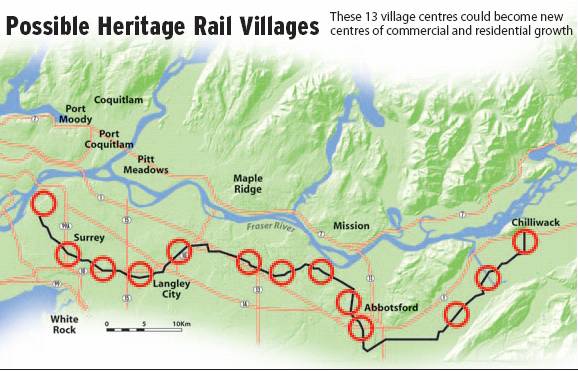
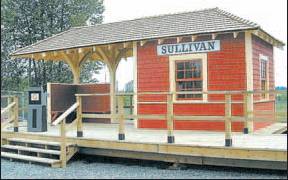
The new Sullivan station in Surrey is a replica of a station from the Inter Urban days.
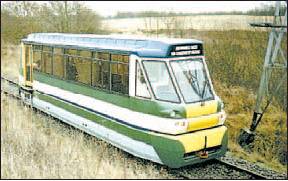
This is one of the rail car types being considered for the new service
Anyone who says history cannot repeat itself is on the wrong track — literally — according to dedicated and far-sighted railway buffs in the Surrey-based Fraser Valley Heritage Railway Society.
These people not only enjoy bringing the region’s rail history back to life, they’re now on a major quest to make something old new again — namely, the resurrection of the old Inter Urban rail passenger service from Surrey to Chilliwack, by using modern rail cars powered by non-polluting hydrogen fuel cells.
The proposal has also caught the eye of Surrey City Council, which hired W.G. Lambert Transportation Consulting.
Its Phase 1 feasibility study on this intriguing idea is near completion. Phase 1 would run over existing track on the original Inter Urban right-of-way near Scott Road SkyTrain Station through Kennedy Heights, Newton and Sullivan Heights to culminate in Cloverdale.
A second phase, also over existing track on the original route, would extend service through Langley and Abbotsford to Chilliwack.
The project’s spokesman is Peter Holt, executive director of the Surrey Chamber of Commerce. He’s an engineer by profession — and self-confessed train buff.
Holt says the heritage group stumbled into its current role as proponent for the new service through its ongoing project of buying and restoring several original Inter Urban cars, which it wants to run as a tourist attraction on the route.
“We quickly realized that the best way to get the heritage part running was to have a modern passenger service running as well,” he says.
The group envisions a new classification called “community rail,” which unlike commuter rail would operate more like a bus service with multiple stops.
It’s big in Britain, where abandoned rail lines are now being rejuvenated with hi-tech, self-powered propane cars carrying 50 to 100 passengers each. Converting this new car breed to fuel cells is feasible, Holt adds.
He also says community rail and the Fraser Valley’s transportation needs fit hand-in-glove.
Key regional town centres such as Cloverdale, Langley, Abbotsford and Chilliwack developed from the original Inter Urban, an electrified service which operated from 1910 to 1950 from downtown Vancouver to Chilliwack.
The rejuvenated line would also link key commercial centres, the expanding Abbotsford International Airport and colleges (Kwantlen, Trinity Western, University College of the Fraser Valley).
In fact, a total of 13 village centres with potential for new residential and commercial development triggered by community rail service have been identified along the full route.
The project has veteran Surrey councillor Bob Bose clearly excited. He is chairman of the city’s new transportation committee and says community rail could help solve some of Surrey’s transportation challenges.
“It will take decades to break Surrey’s car-dependent mould, but this project will certainly be a good starting point,” he says. “Community rail is a wonderful adjunct to our entire initiative towards having higher density and less car dependency.”
Adds Surrey councilor Linda Hepner: “From an economic development perspective, I’m really keen on the fuel-cell idea.”
Although much work still needs doing, Holt would like Phase 1 in service by 2009 and full service, even on a preliminary basis, ready for the 2010 Olympics.
Preliminary cost estimates for the first phase are $10-$15 million, Holt says. That compares with a TransLink plan to build a dedicated B-Line bus service down King George Highway at an estimated $120 million, he adds.
Will it happen? These train buffs think it can.
If you have a story idea or noteworthy item about anything going on in the Fraser Valley, you can e-mail Brian at [email protected]
© The Vancouver Province 2006
Suzuki lashes out at twinning Port Mann Bridge plan
Friday, June 23rd, 2006170 planners oppose expansion of bridge and highway
Frank Luba
Province
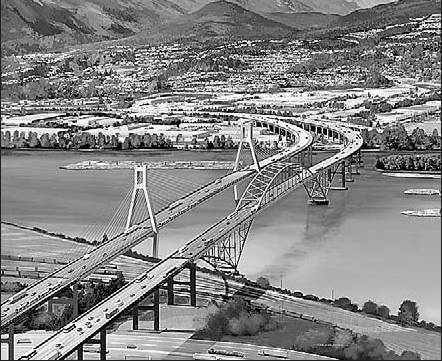
The twinning of the bridge is intended to relieve the area’s traffic problems.
Award-winning scientist and broadcaster David Suzuki used the backdrop of the World Urban Forum yesterday to voice his opposition to the provincial government’s plan to twin Port Mann Bridge and expand Highway 1 from Langley to Vancouver.
Suzuki added his signature to those of 170 planners opposed to the bridge and highway expansion. The petition was sent from the 2006 World Planners Congress to B.C. Premier Gordon Campbell and Finance Minister Carole Taylor.
The Port Mann twinning and the Highway 1 expansion are a $1.5-billion chunk of the $3-billion Gateway Program being pushed by Transportation Minister Kevin Falcon to address congestion and the movement of goods and services.
Suzuki isn’t buying Falcon’s plan.
“There is not a single case in the world in which expansion of highway systems leads to reduction of congestion,” said Suzuki.
“[The expansion] opens up that whole valley for greater development and bigger sprawl, more sprawl, more single-family dwellings with two to three cars. You’re just going to increase the amount of congestion. It’s not a solution.”
Falcon said he wouldn’t be supportive of the plan if it only entailed twinning the bridge and expanding the highway.
The Gateway plan, explained Falcon, also includes more high-occupancy vehicle lanes, the ability to put public transit on the bridge, expanded cycling capability and tolls “that would get people thinking about options” to driving.
“We know it’s going to get dramatically worse,” said Falcon of the congestion.
© The Vancouver Province 2006




